In a city packed with history and notable events, there are lots of Philadelphia landmarks to see. From Independence Hall, which played an important role in the formation of the country to places like LOVE Park that are synonymous with Philadelphia, monuments and historical sites are scattered around the city. Here’s a look at some of the important spots and places that make Philly unique.
Independence Hall
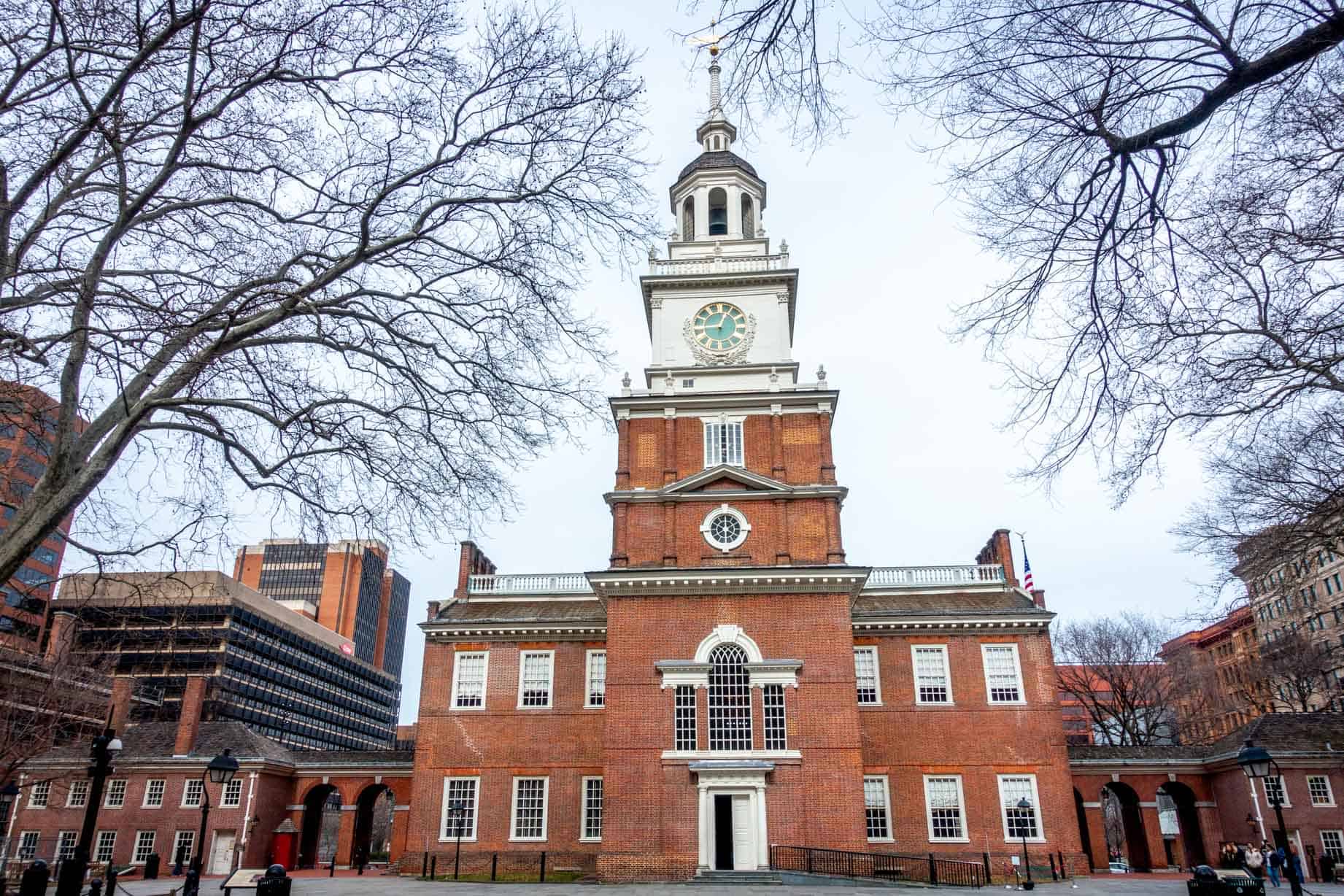
Independence Hall is the most notable landmark in Philadelphia. Completed in 1753, the building that was once the Pennsylvania State House is now known around the country as the site where the Declaration of Independence and the U.S. Constitution were signed.
Inside, Independence Hall looks as it did in 1776 when George Washington, Benjamin Franklin, Alexander Hamilton, and others walked its halls. A visit to the historic site is brief (about 20 minutes) but packed with information and significance thanks to the knowledgeable park rangers who give the tours. We’ve visited numerous times and always learn something new. Advanced tickets are just $1.
After your tour, visit Congress Hall next door to see the first Senate chamber and first House of Representatives used from 1790 until 1800 when Philadelphia was the capital of the brand new United States. Both buildings are located within a secure zone–make sure to leave enough time before your tour to go through the checkpoint.
Liberty Bell
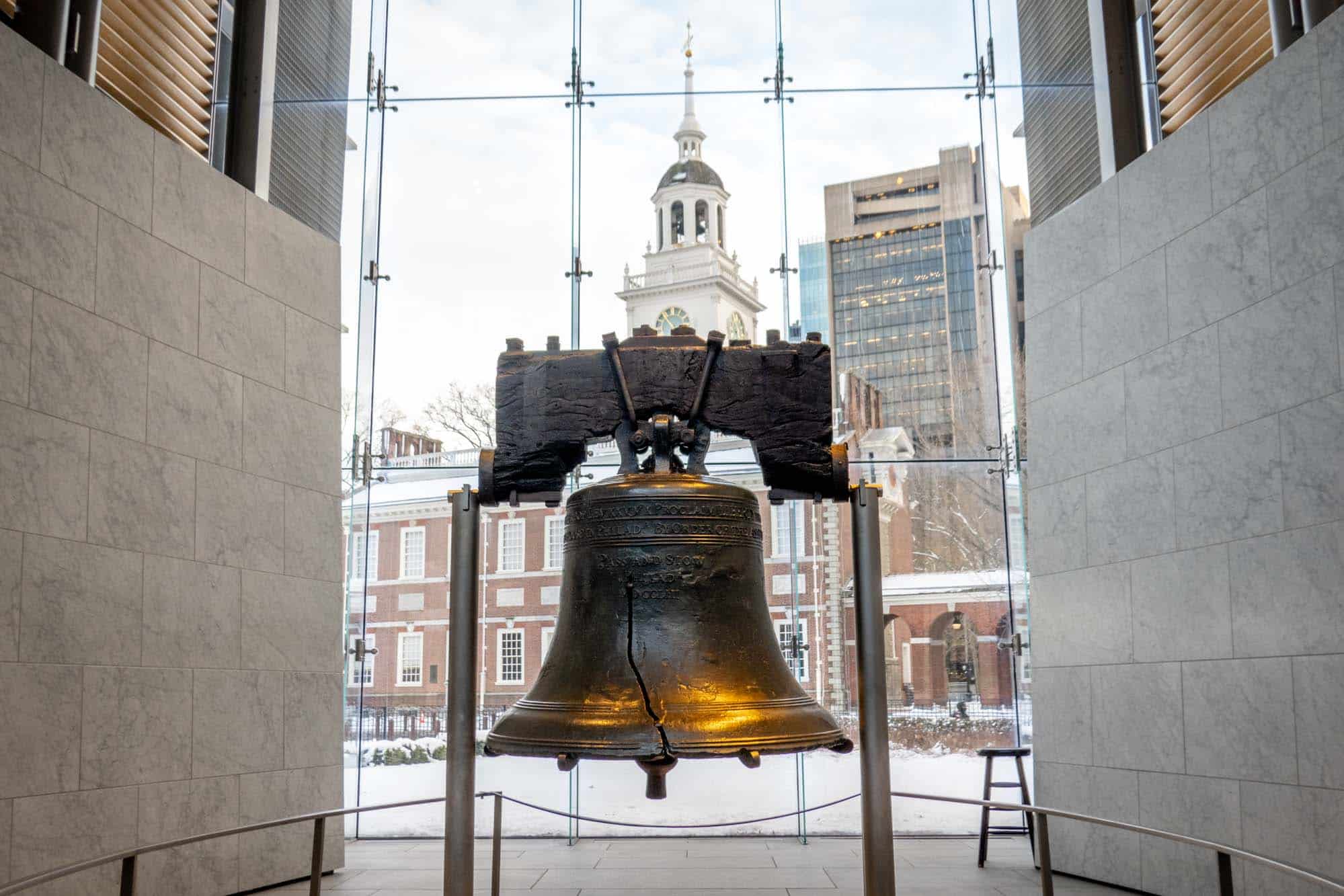
Second only to Independence Hall, the Liberty Bell is synonymous with the City of Brotherly Love.
This famous city landmark was once part of the carillon at the State House now just a few yards away. Dating from 1755, no one really knows when it cracked, though it was likely the 1840s. In its imperfectly perfect state, it has long been a symbol of liberty and is displayed year-round in Old City.
The Liberty Bell is housed in a museum adjacent to Independence Hall. It’s free to visit and gets quite busy in peak season. If the line is too long due to crowds and security, you can see the bell 24 hours a day through the window on the building’s south side. It’s also illuminated at night.
Elfreth’s Alley
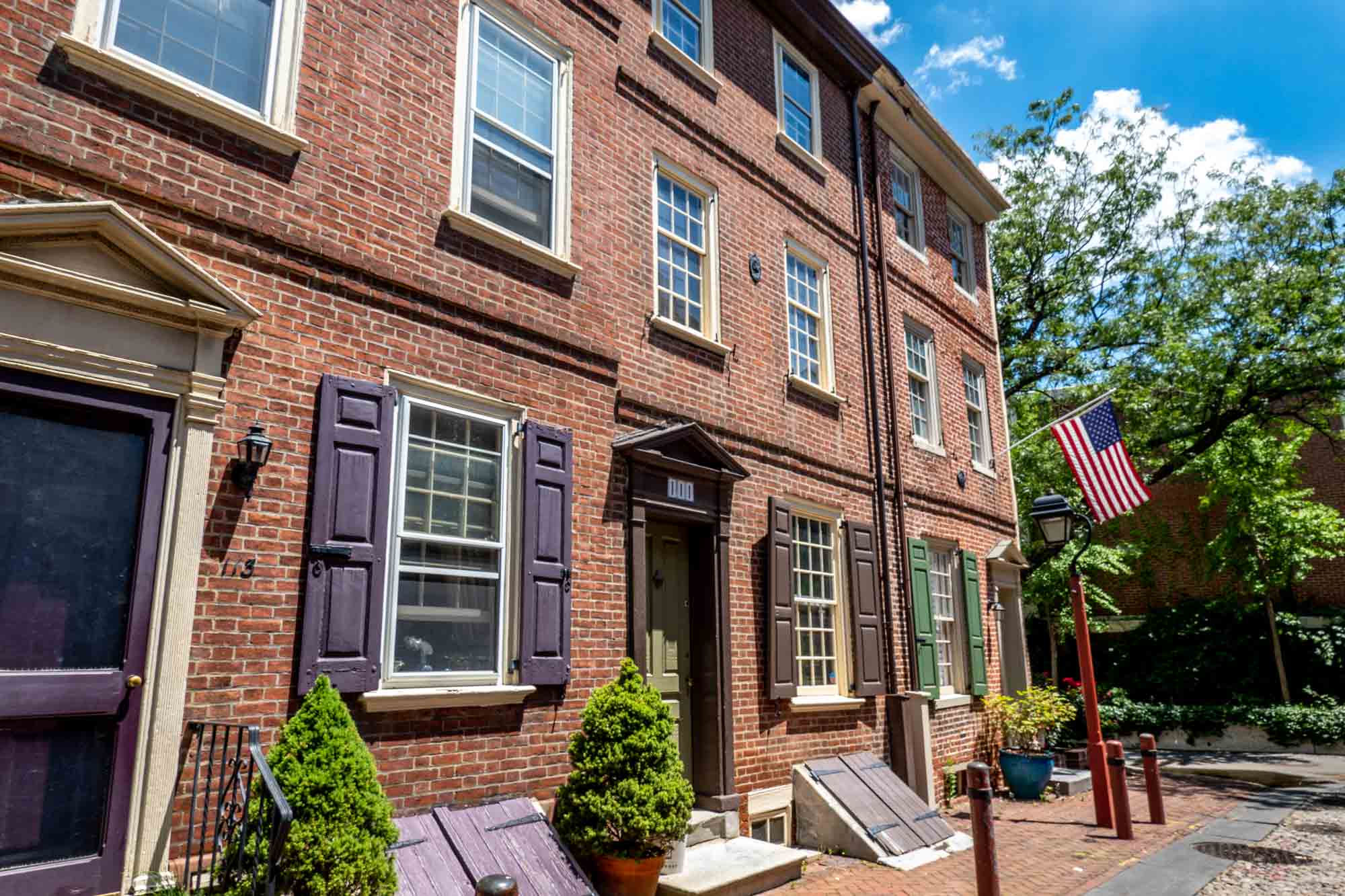
Few places in the city are as colorful as Elfreth’s Alley. Its decorated facades and brightly painted doors attract visitors and locals year-round. The residents here decorate regularly, so we love it because there is always something new to see.
Elfreth’s Alley is the oldest residential street in the country, and people still live in its 32 historic dwellings. In fact, they’re some of the most sought after in the city. The buildings here date as far back as 1703, and you’ll even find a museum that occupies 124-126. The museum has been restored to its Colonial-era appearance and tells the history of the street and the tradesmen who lived here when it was first built.
Mother Bethel AME
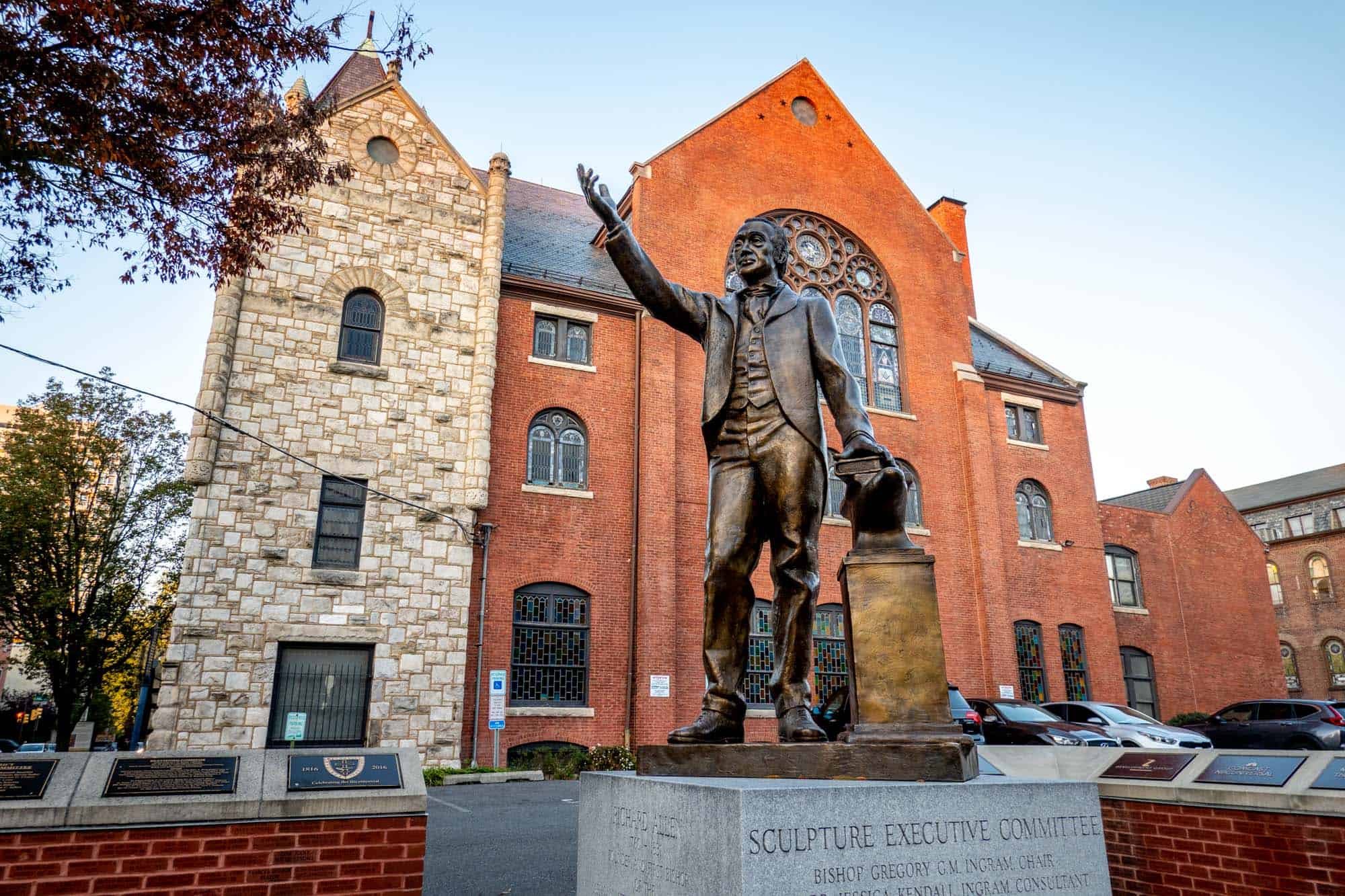
Fed up with racial segregation in a local Methodist church, Reverend Richard Allen led many Black members of the congregation to splinter. The result was the formation of what is now Mother Bethel AME, the mother church of the first Black denomination in America.
Dating to 1787, the church was built on the oldest piece of land in the US that has been continuously owned by African Americans. Over the years, it welcomed prominent abolitionists, including Frederick Douglass and Lucretia Mott, and became a stop on the Underground Railroad. Rev. Allen’s tomb and artifacts related to his life and the church’s history are featured in the on-site museum. Tours of the church are available Tuesday through Saturday from 10am to 3pm by appointment.
B. Free Franklin Post Office & Museum
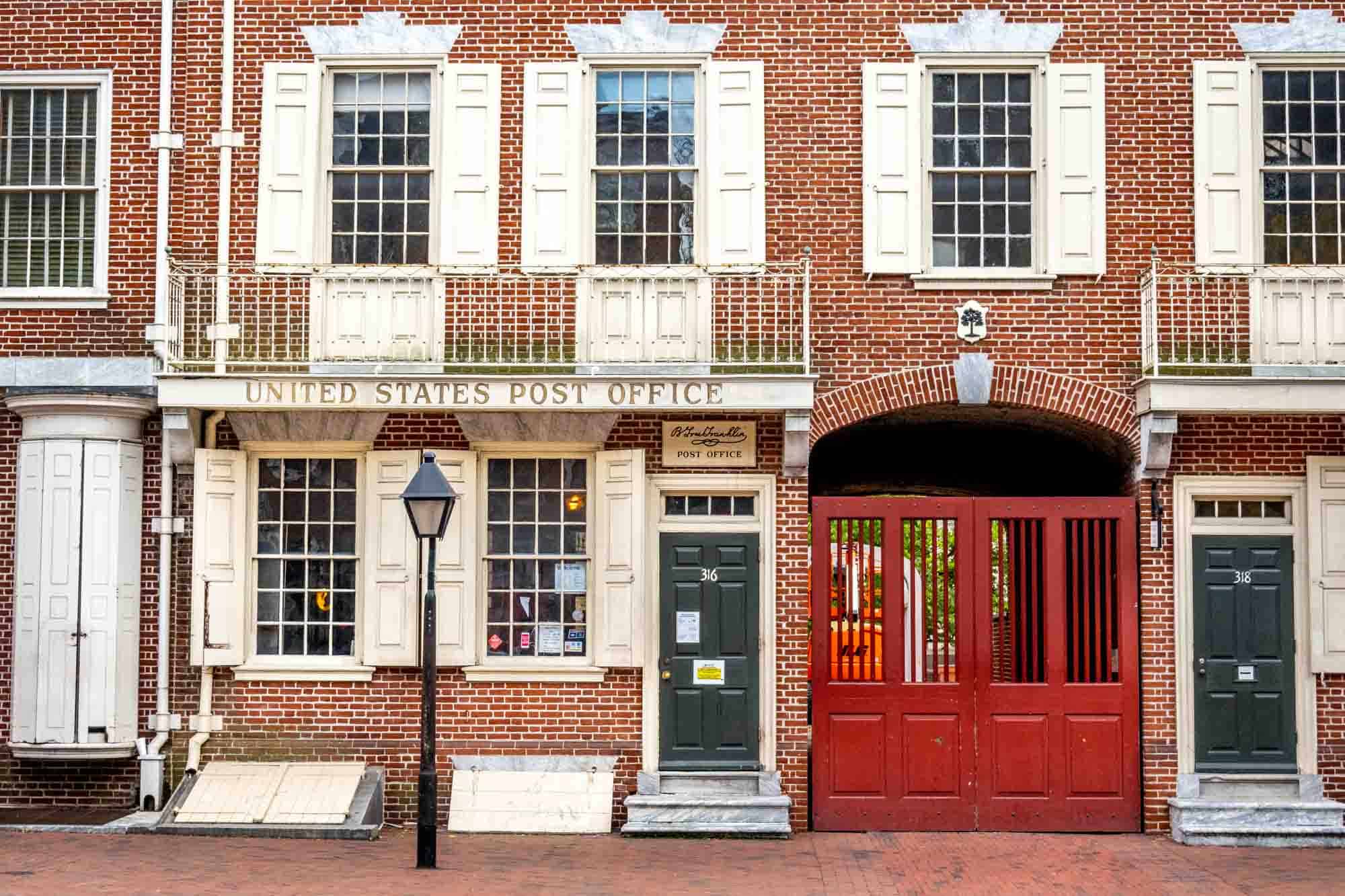
Close to the historic sites in Old City, the B. Free Franklin Post Office & Museum is an homage to Benjamin Franklin’s roles as postmaster of Philadelphia and later Postmaster General. Though this site wasn’t a post office in Franklin’s time, employees here hand-cancel stamps with the postmark “B. Free Franklin,” which he used. A small museum has displays about the history of the postal service and related memorabilia. It’s worth a brief visit if you want to mail a letter or postcard with the special stamp. They don’t sell postcards, so you’ll need to bring one with you.
Betsy Ross House
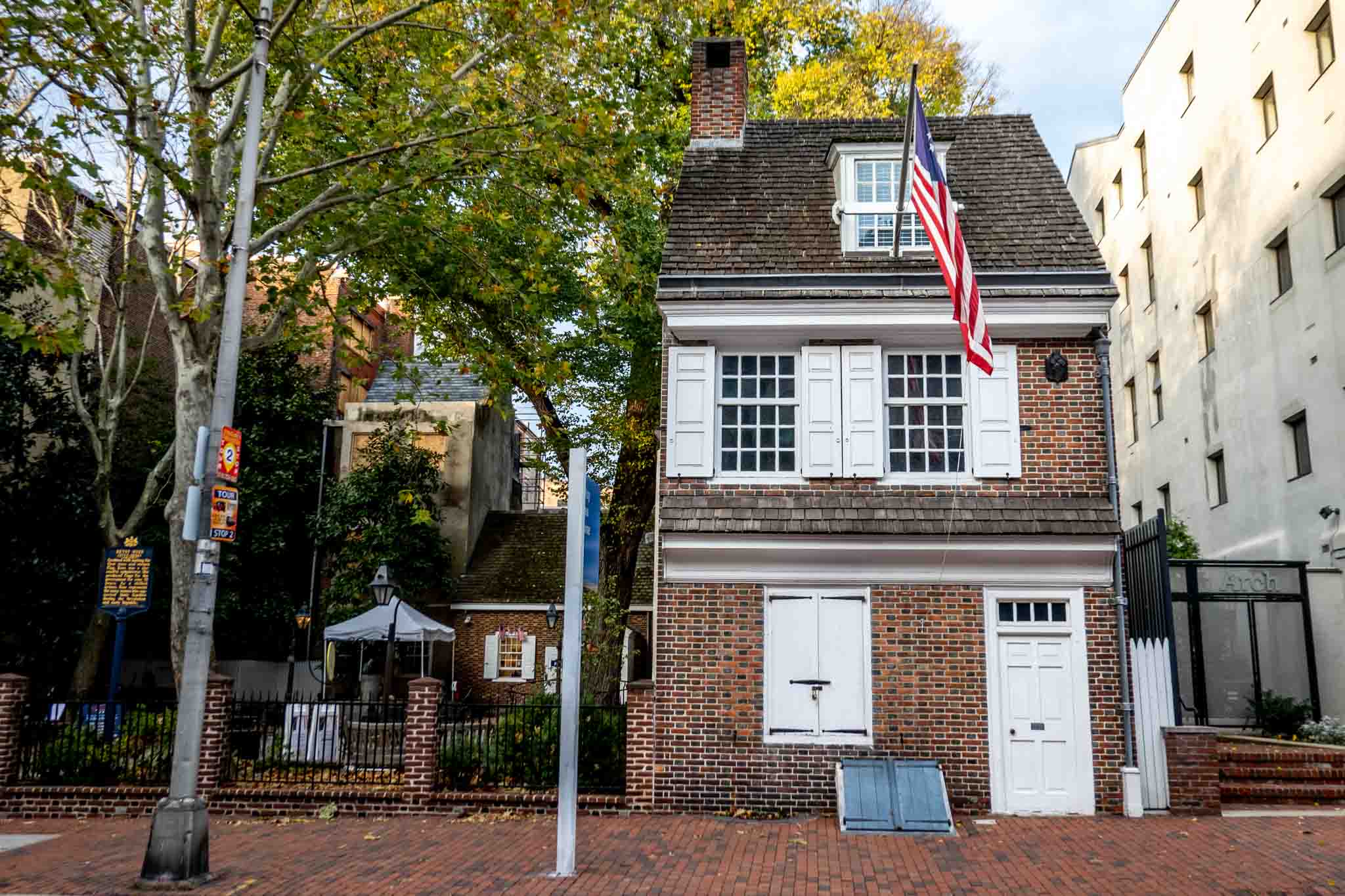
A Pennsylvania colonial style building on Arch Street—the Betsy Ross House—is one of the most famous landmarks in Philadelphia. The 1740s home is filled with information about Ross’s history, her experience with the American Flag, and her interactions with George Washington. On a tour, historic interpreters work in an 18th-century upholstery shop like the one Betsy owned, and the seamstress herself can tell you about her famous work.
The site provides kids’ activities, including historic mysteries to solve and an audio tour about growing up in colonial America, to ensure guests of all ages can appreciate the house’s significance. In the summer, (often costumed) performers tell short 3- to 5-minute stories on the storytelling bench outside.
President’s House
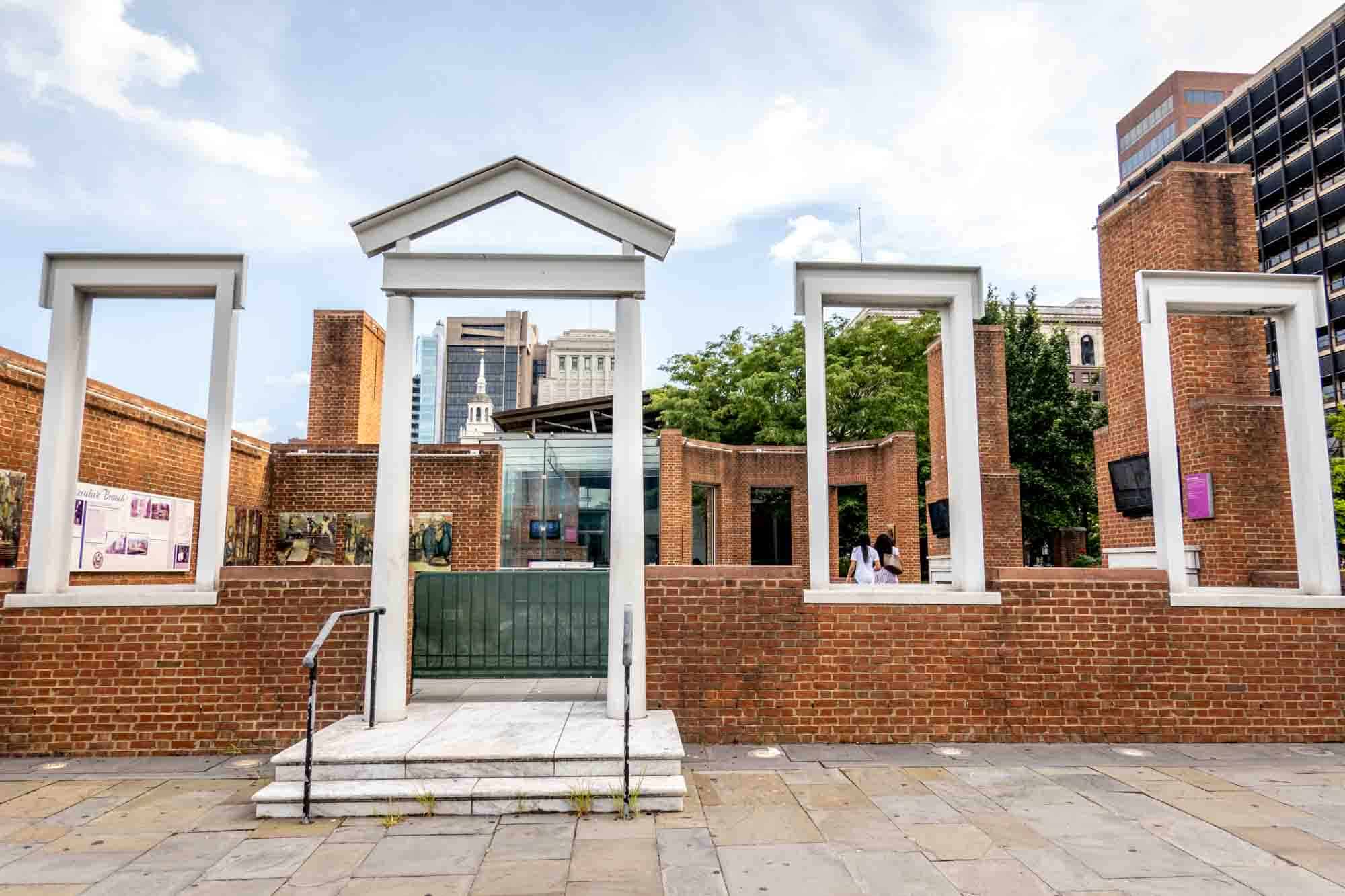
The President’s House was occupied by George Washington and John Adams during their terms of office. Though the building has been demolished, an open-air structure in its footprint provides information about the house and the people who lived there.
Importantly, the exhibit at the President’s House explores the paradox between the founding fathers fighting for independence for some while actively keeping others locked in the shackles of slavery. It addresses the nine enslaved people Washington kept in the city and what their lives were like in the household. It’s free to visit and always open.
Christ Church
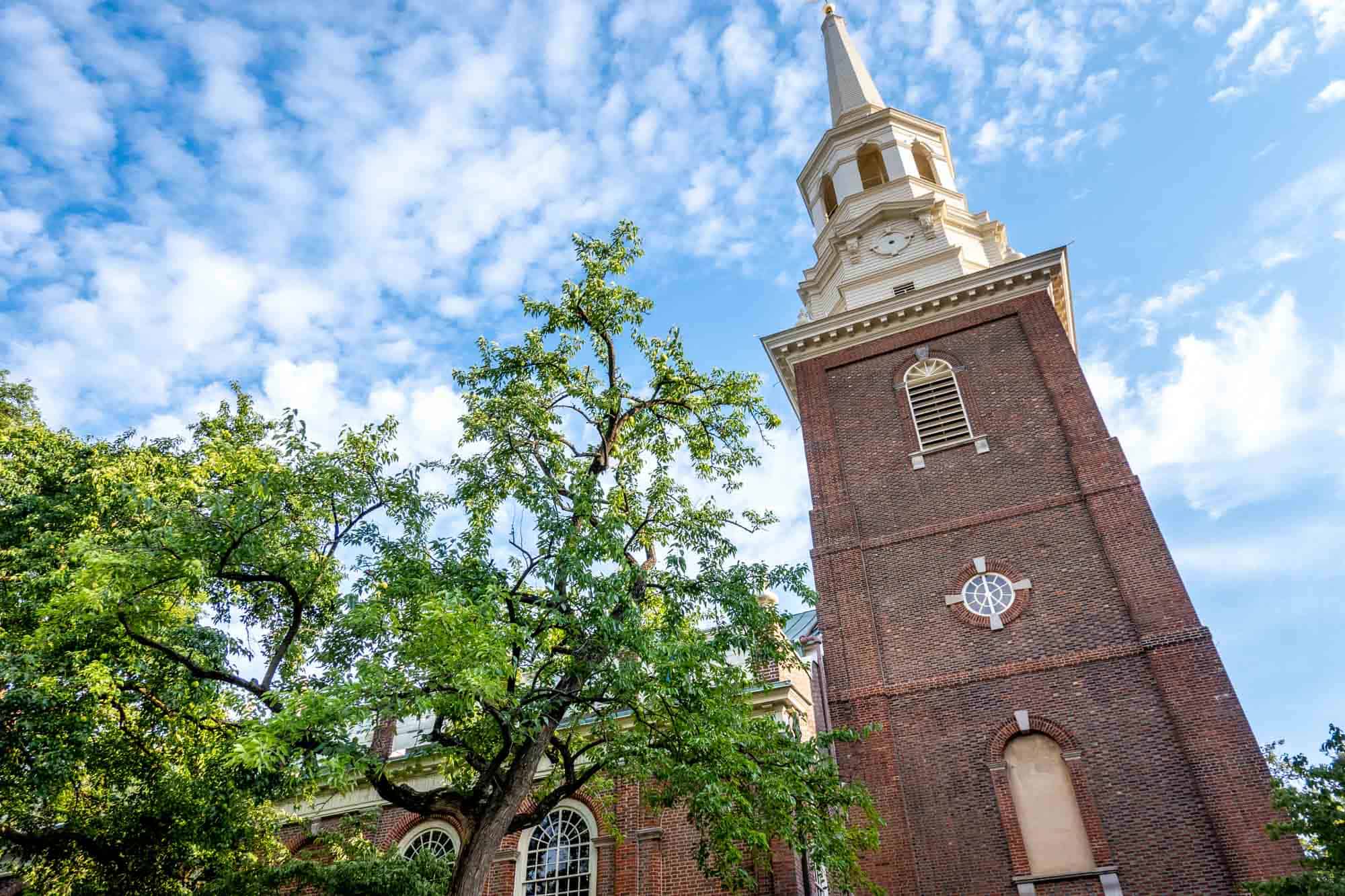
Founded in 1695, Christ Church is the birthplace of the American Episcopal Church. Centuries ago, it welcomed presidents, signers of the Declaration of Independence, and other notable figures among its worshipers. Some of those significant people are buried on the grounds while others were laid to rest at the church’s graveyard several blocks away.
The current Christ Church building that dates from 1744 is filled with history and is open for tours. Inside, you can see the pews where notable people sat, including George Washington, Betsy Ross, and the family of William Penn. You’ll also see the medieval baptismal font from England with which Penn was originally baptized in London. The educators inside the church and well-informed and can answer almost any question you have about the church and Christianity in early Philadelphia.
Most of the year, a weekly farmer’s market featuring local producers and artisans takes place on its grounds. Don’t hesitate to stop in for something delicious.
Benjamin Franklin’s Grave
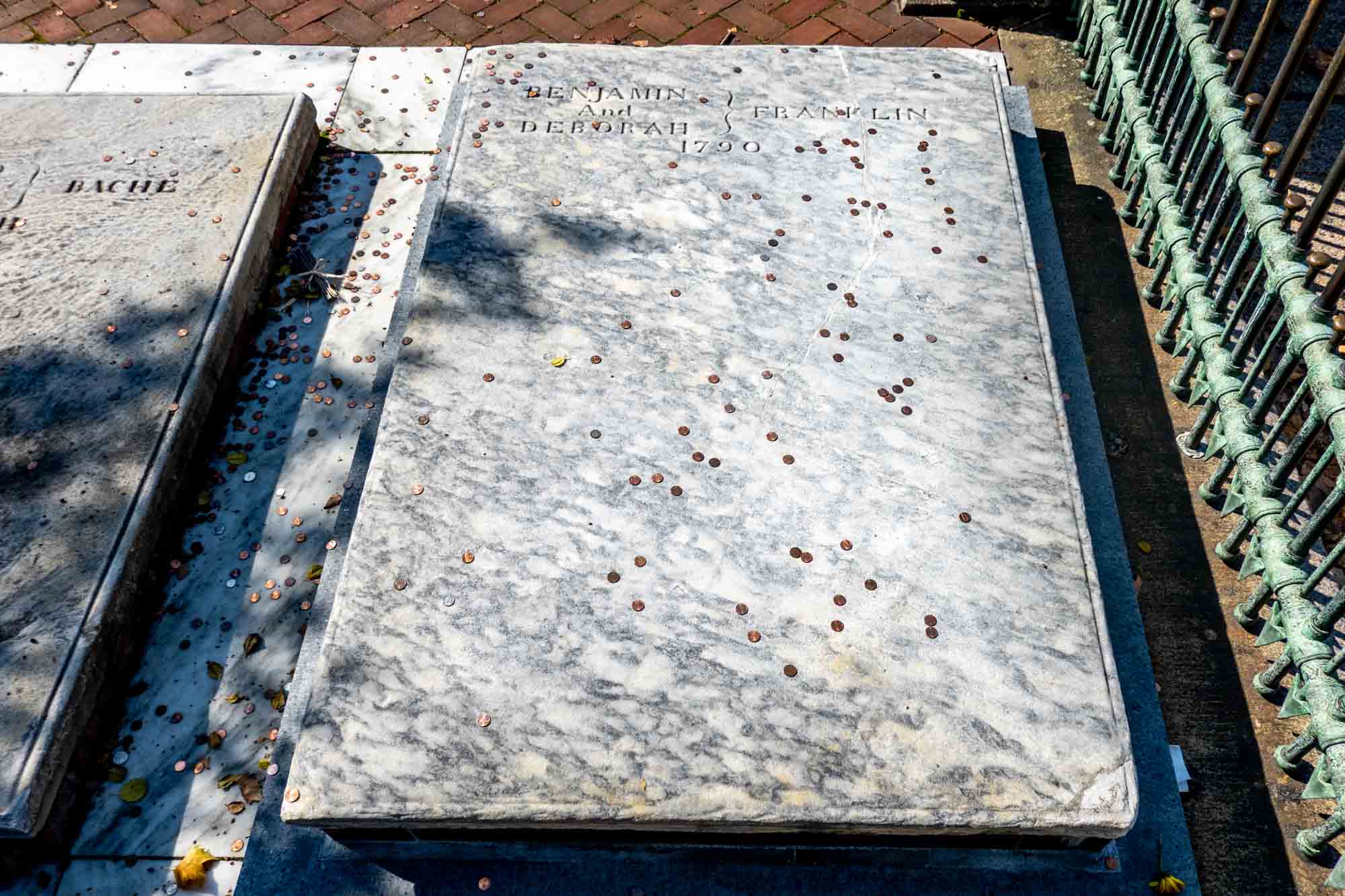
Even on a quick weekend trip to the city, Benjamin Franklin’s grave is a must-see for most visitors. The grave is located in the Christ Church Burial Ground alongside many other early residents and people who contributed to shaping the city.
Franklin’s grave is located in the corner of the burial ground at 5th and Arch and can be seen without paying to enter (though a more thorough visit is interesting). You’ll often find pennies on top of the large marble slab, an homage to Franklin’s adage that “a penny saved is a penny earned.”
Carpenters’ Hall
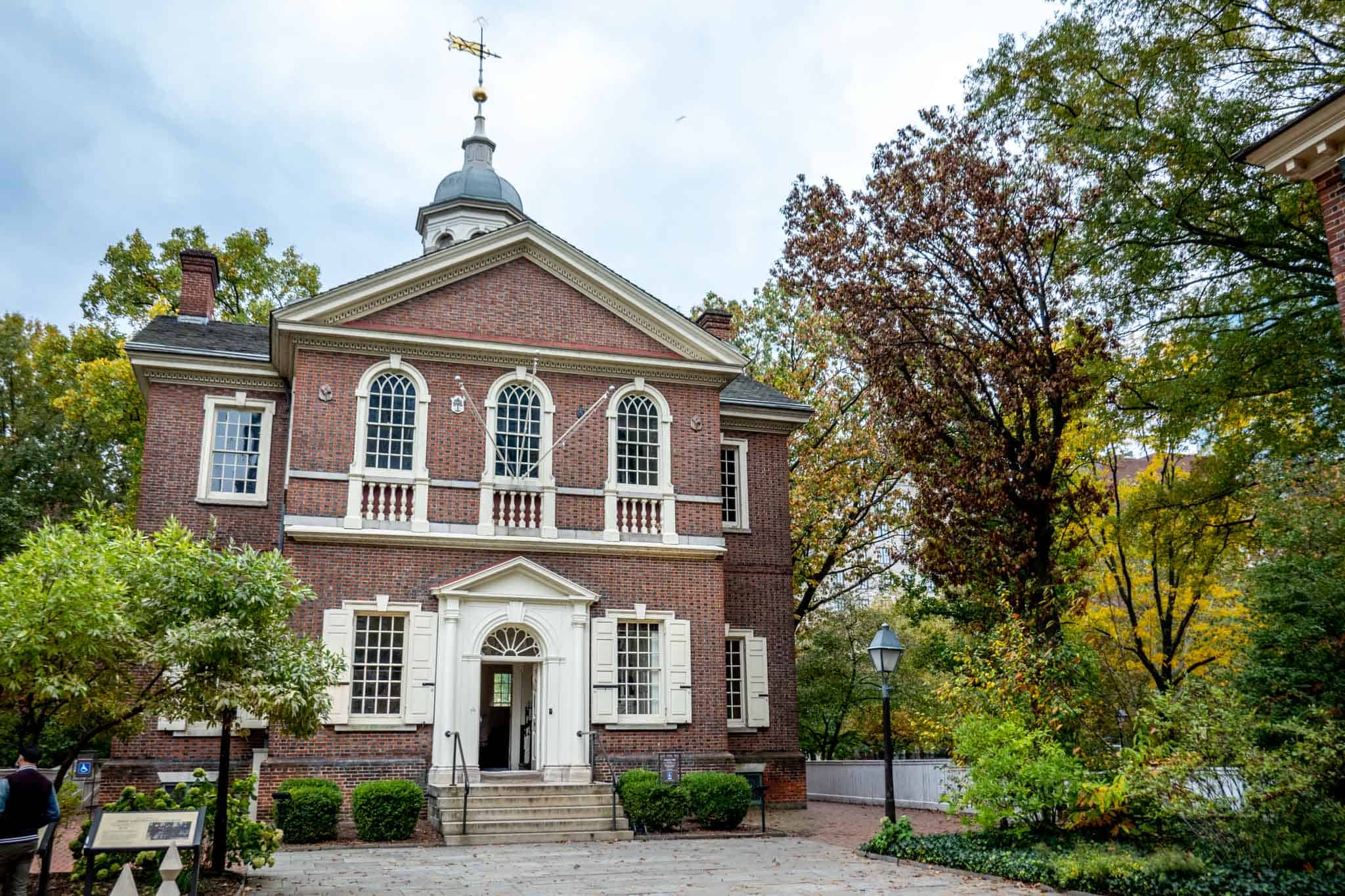
In 1774, Carpenters’ Hall was the home of the First Continental Congress where delegates from the colonies voted to take a stand against the King of England. Patrick Henry and other passionate patriots gathered here to debate the future of the colonies and the path to independence. The delegates’ chairs and the original banner from the 1788 Constitutional parade are still displayed.
The Carpenters’ Hall building is beautiful and features rotating exhibits, so we like to stop in to see what’s new on display. It’s free to enter and a relatively quick visit, so it’s worth adding to your list.
City Hall
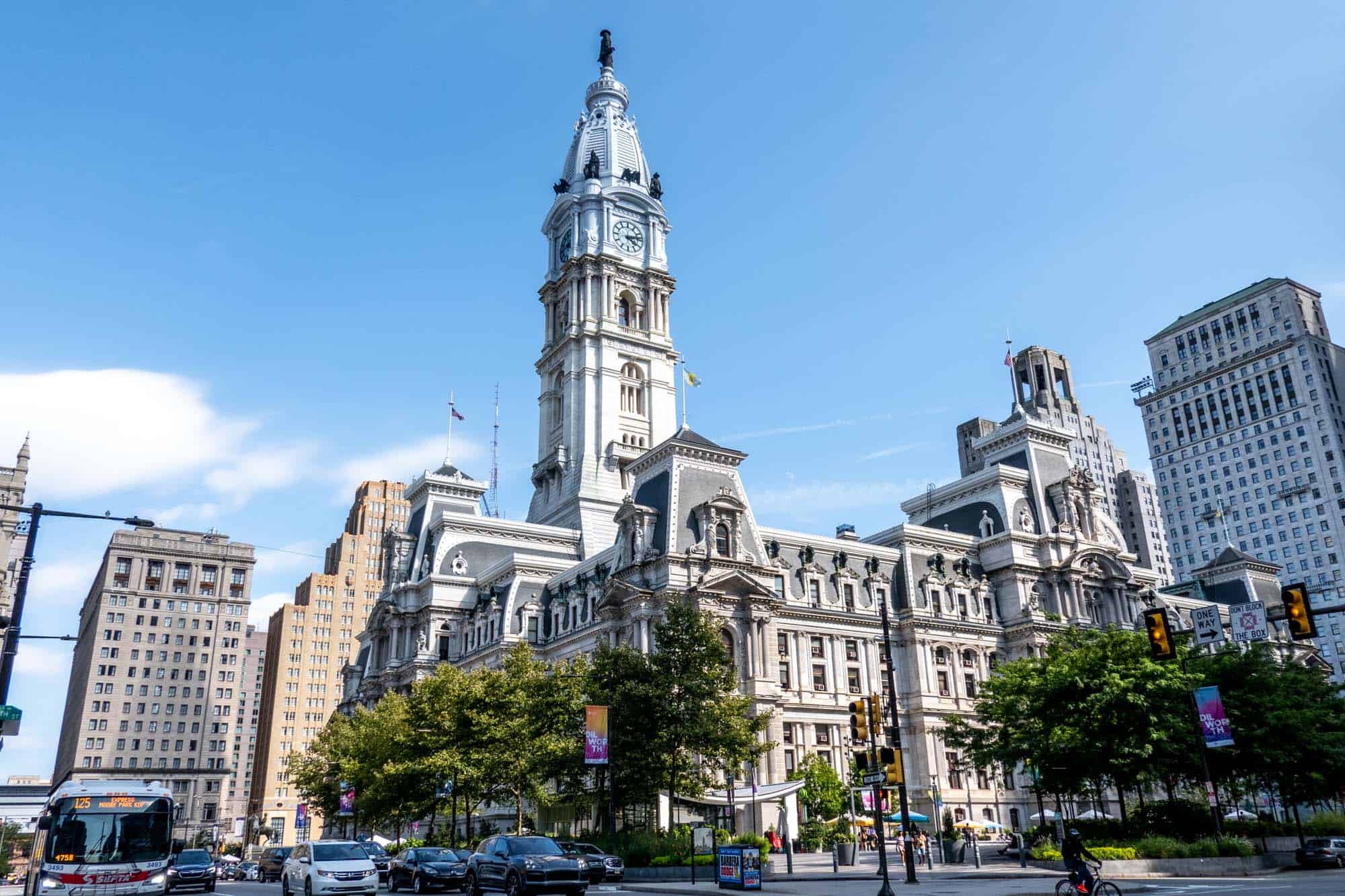
Center Square was one of the five original parks laid out by William Penn in 1682. That space is now occupied by the ornate Philadelphia City Hall. The largest municipal building in the United States, it’s impossible to miss thanks to its size and unique construction.
The exterior of the building is an artwork itself, covered in over 250 statues designed by Alexander Milne Calder, the patriarch of the Calder family of sculptors. A statue of William Penn looks out over the city at the top of the 548-foot tower, which was the tallest in Philadelphia for 80 years after it was built.
Taking the elevator up 14.5 floors to the tower’s observation deck is a unique experience. The elevator only fits four people and climbs through the 19th-century building. I was alone when I did the ride, which was slightly eerie, but I was rewarded with panoramic views of the city via the 360-degree observation deck. The tower tour is only available Monday through Friday, and space is limited.
LOVE Park
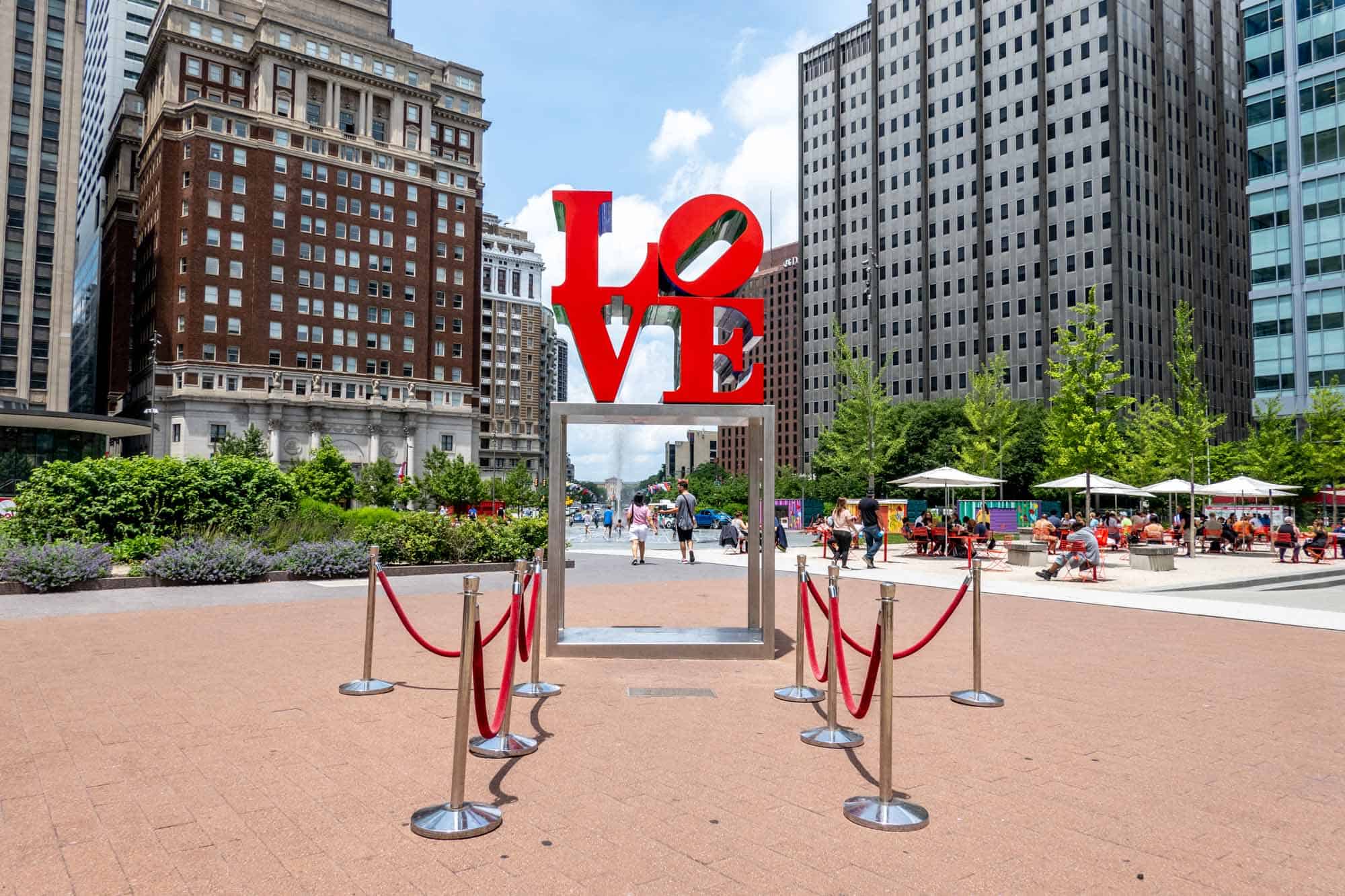
Just northwest of City Hall is John F. Kennedy Plaza, which is better known as LOVE Park. An iconic Philadelphia landmark, it is named for the red LOVE statue by Robert Indiana.
The park is a popular spot for photos. Throughout the year, there are markets, pop-ups, a beer garden, and special events here, including the city Christmas market.
Rocky Statue and Steps
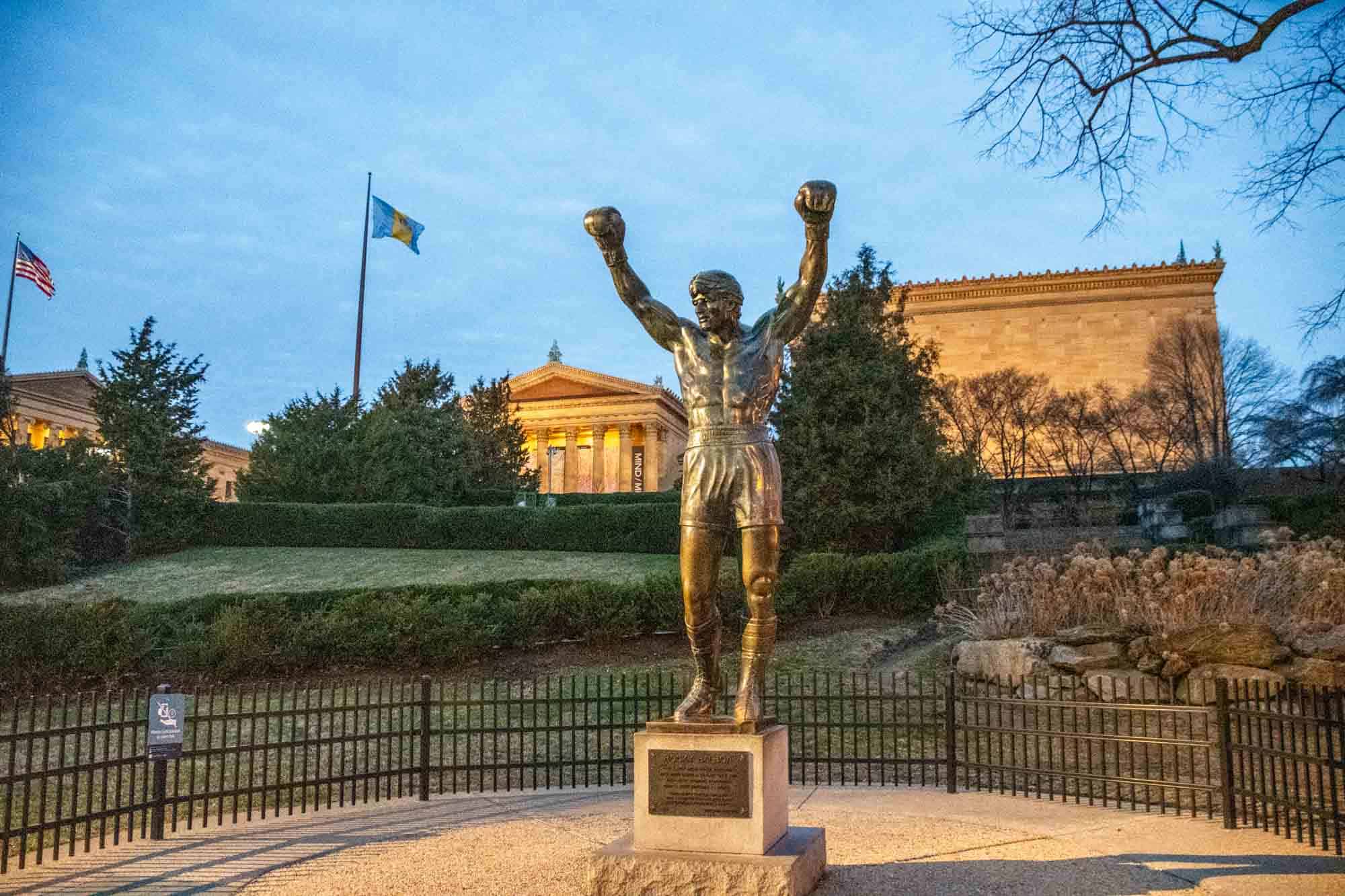
The Rocky movie franchise is heavily associated with the city and all the locations around town that provided its backdrop. From Pat’s King of Steaks where Rocky ate to Victor Cafe, which served as Adrian’s Restaurant, the filming spots are well-known. It’s likely that none is more famous than the “Rocky steps” at the Philadelphia Museum of Art.
Every year, thousands of tourists triumphantly scale the famous steps in homage to the fictional boxer and then pose with the bronze statue at the corner where Kelly Drive meets Eakins Oval. You will almost always have to wait in line to take a photo here, so avoid weekends, if you’re in a hurry. A visitor’s center sells exclusive Rocky merchandise.
Eastern State Penitentiary
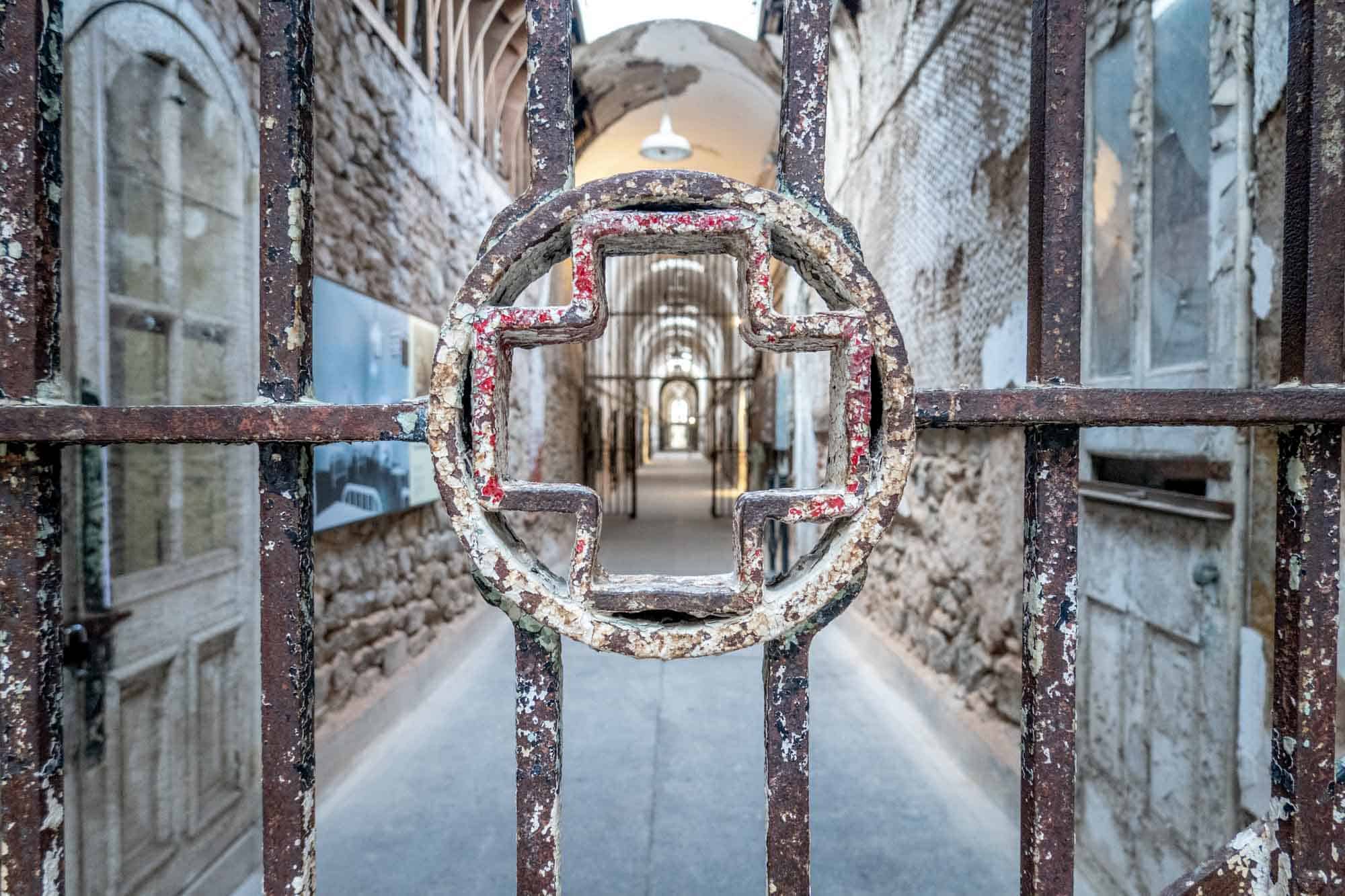
Eastern State Penitentiary is one of the most unique sites in the city. Now a preserved ruin, it housed thousands of inmates in its 140-year history.
Twenty years without maintenance led to crumbling walls, split concrete, and cellblocks that are open to the elements. In that ruined state, the penitentiary has since become a museum with exhibits that tell the history of the building and stories of many former prisoners. It’s a fascinating–and sometimes unsettling–place to explore, especially if you find yourself alone in a cell or wing.
Take the audio tour to get the most out of your visit. In the summer, there is often a beer garden in the central courtyard.
Historic Rittenhouse Town
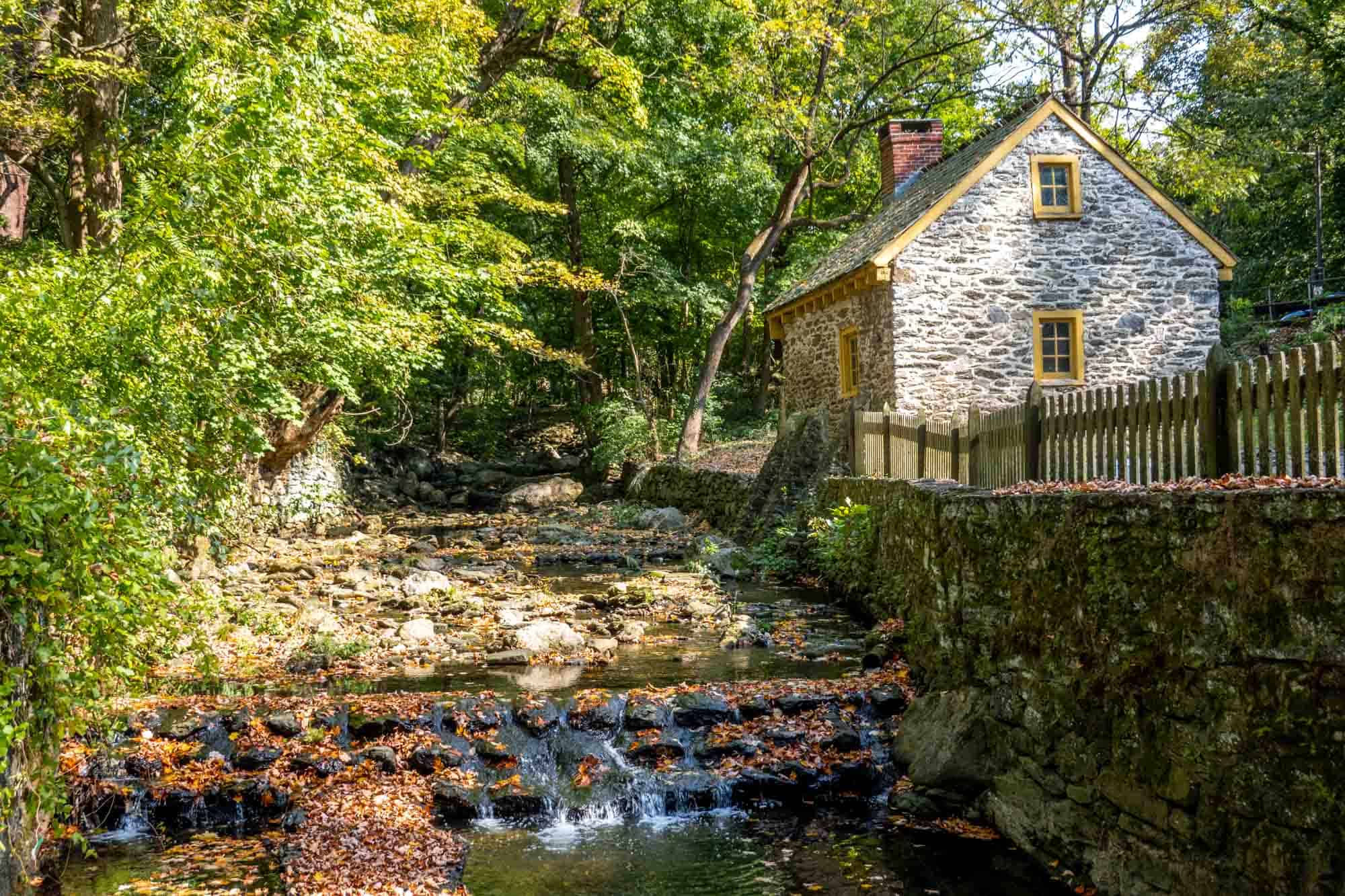
Right along Lincoln Drive, Rittenhouse Town is one of the oldest historical landmarks in the city. The site contains the remains of a community that included the first paper mill in North America built in 1690. Today, six buildings remain, including facilities that host cooking demonstrations and paper-making workshops.
With an appointment, visitors can tour the buildings. The site also hosts frequent events during which visitors can get a glimpse into the historic spaces. It’s worth the time to wander around and appreciate the natural beauty and history of the place, even if you don’t go inside the buildings. Visiting in the spring and fall is particularly nice when the trees are flowering or showing their autumn colors.
